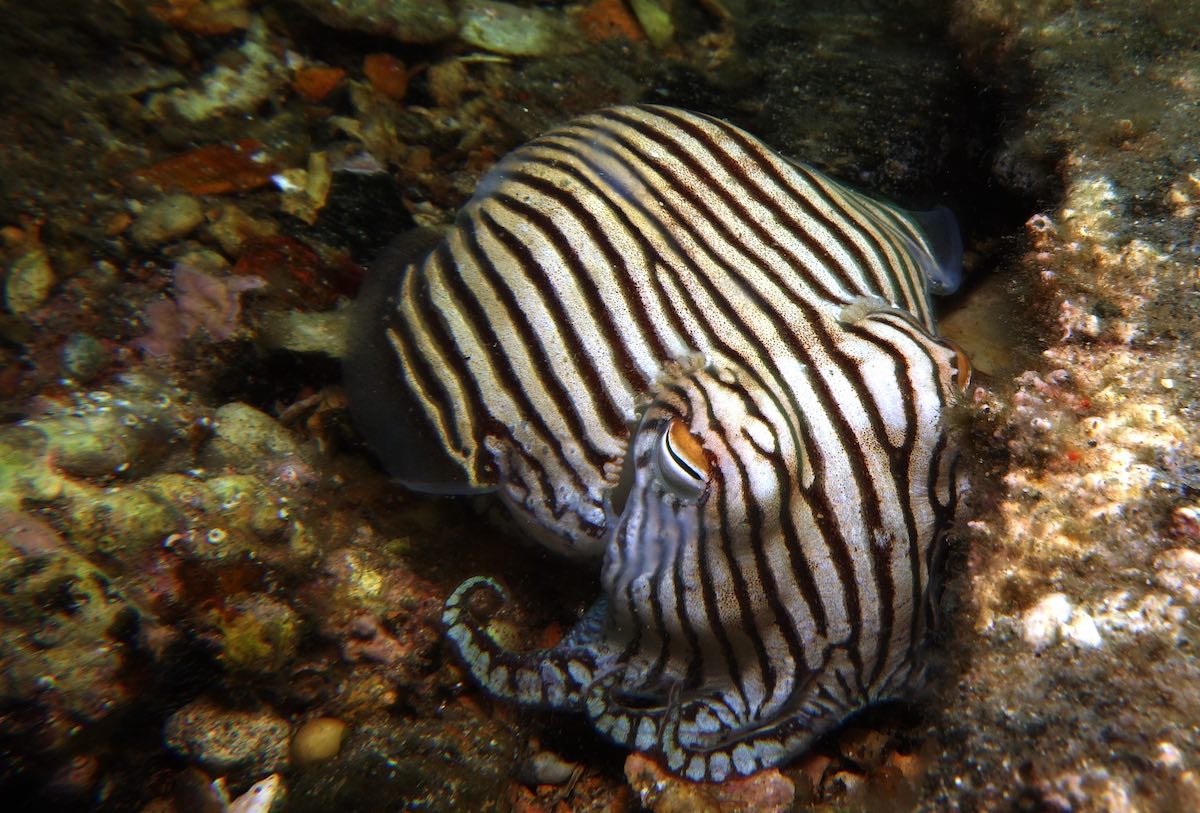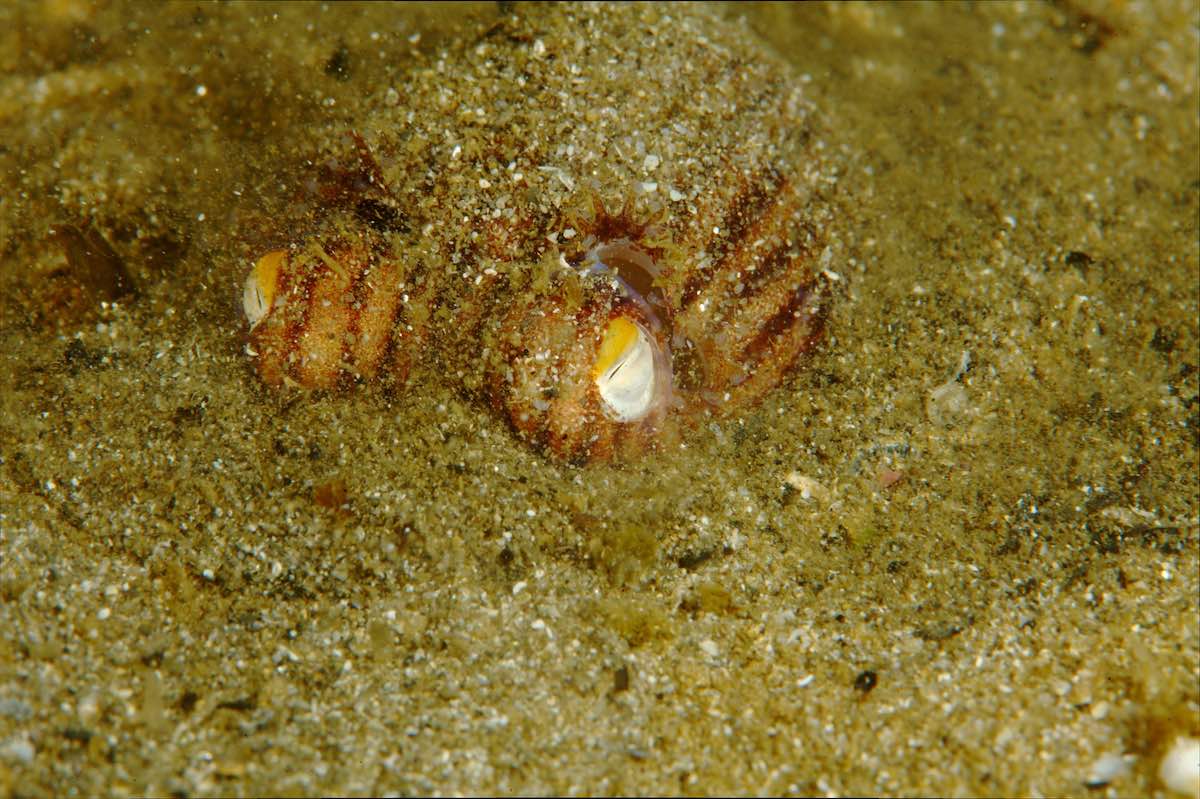Meet the Striped Pyjama Squid
They’re small. They’re striped. They’re not squid.

It’s no secret that we’re big fans of cephalopods. It’s hard not to be when the group includes one-of-a-kind species like the adorable bobtail squid, the deadly blue-ringed octopus and the mysterious vampire squid.
Today, we’re celebrating another member of the impressive cephalopod clan: the striped pyjama squid. These tiny animals only grow to about 3 inches long but have some pretty remarkable traits.
The striped pyjama squid (Sepioloidea lineolata) is not a squid at all—it’s part of the family Sepiadariidae, which is a group of cuttlefish. Although squid and cuttlefish may look similar, they are two very different animals. Squid have sleek, torpedo-shaped bodies, and are fast-moving predators. On the other hand, cuttlefish have broader, stout bodies and move more slowly. Check out this post to see other ways to tell these two groups apart.
This charismatic cephalopod is found in shallow (less than 60 feet) waters in the Indo-Pacific region. They prefer sandy or rocky habitats, including near seagrass beds. During the day, striped pyjama squid will bury into the sand to hide from potential predators. They keep their yellow-ish eyes above the sand, which allows them to keep watch for delicious fish or crustaceans to eat.

Striped pyjama squid get their name from their vibrant black stripes down its body—similar to striped PJs (or Beetlejuice’s suit, for the Tim Burton fans out there). Their stripes could be used to warn predators away, since the pyjama squid is both venomous and poisonous. Fun fact: All octopuses, cuttlefish and most squids are venomous, but only some of those are also poisonous.
The striped pyjama squid can’t stay hidden in the sand all the time, so they need some way to protect themselves when they emerge. When the pyjama squid is stressed, it secretes a slime that contains toxins from glands around its body. If that isn’t enough to deter predators, it can also squirt ink to and make a quick escape. Like other cephalopods, they also can change color by tightening specialized cells in their skin called chromatophores.
Just to recap: These critters can change color and secrete toxic slime—and look good doing it. So, here’s to the striped pyjama squid, who is yet another exceptional cephalopod!